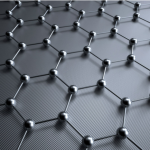Engineering Materials Objectives Part 03
41 . The electric breakdown strength of a material depends on its “composition, thickness and moisture current”.
42 . Polystyrene” has the highest dielectric strength.
43 . Teflon” can be used at temperatures above 100°C.
44 . Mica” can be used for temperatures upto 500°C.
45 . Materials having a high dielectric constant, which is non-linear, are known as
“ferroelectric materials”.
46 . The temperature beyond which substances lose their ferroelectric properties, is known as “Curie temperature”.
47 . The dielectric strength of ferromagnetic materials depends to a large extent on
“intensity of electric field”.
48 . Rochelle salt, Potassium dihydrogen phosphate and Barium titanate” are the
ferroelectric material.
49 . The curie point for Rohelle salt is about “240°C”.
50 . Piezoelectric materials serve as a source of “ultrasonic waves”.
51 . Materials which lack permanent magnetic dipoles are called “diamagnetic”.
52 . Germanium has “covalent bond”.
53 . When the atomic magnetic moments are randomly oriented in a solid its magnetic
behaviour is termed as “paramagnetic”.
54 . In ferromagnetic materials “the atomic magnetic moments are antiparallel and unequal”.
55 . The intensity of magnetization, M, of ferromagnetic solid “decreases with increasing
temperature”.
56 . When a ferromagnetic substance is magnetised small changes in dimensions occur.
Such a phenomenon is known as “magnetostriction”.
57 . Magnetic recording tape is most made from “silicon-iron”.
58 . Addition of 0.3% to 4.5% silicon to iron “increases the electrical resistivity of iron”.
59 . The permeability of iron can be increased by “alloying with cobalt”.
60 . A material with unequal anti-parallel atomic magnetic moments is “an anti- ferromagnet”.


